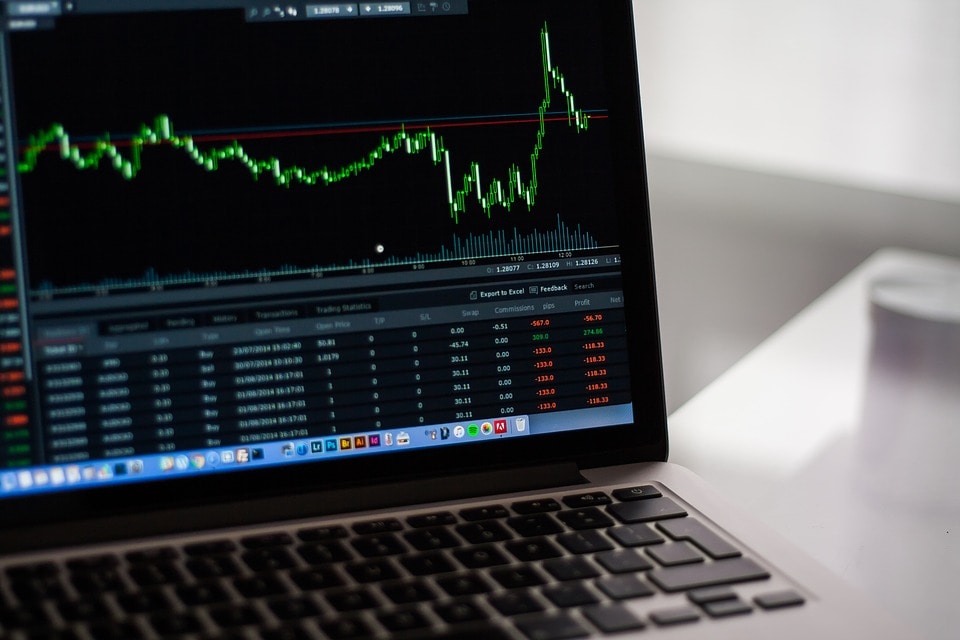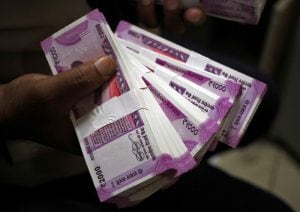Rural focus themes expected to do better this year, says Sanjay Mookim of BofAML

KV Prasad Jun 13, 2022, 06:35 AM IST (Published)
 Listen to the Article (6 Minutes)
Listen to the Article (6 Minutes)
Summary
Depreciation of rupee transfers consumption from urban consumer to the rural producer and the support by the government for its welfare programme will help the rural focussed themes to do better, said Sanjay Mookim, director-India equity strategy at Bank of America Merrill Lynch (BofAML). “The farmers’ input costs are all fixed in rupee terms but the output …
Continue reading “Rural focus themes expected to do better this year, says Sanjay Mookim of BofAML”
Depreciation of rupee transfers consumption from urban consumer to the rural producer and the support by the government for its welfare programme will help the rural focussed themes to do better, said Sanjay Mookim, director-India equity strategy at Bank of America Merrill Lynch (BofAML).
“The farmers’ input costs are all fixed in rupee terms but the output prices tend to move with the rupee-dollar as well, Mookim said.
“Our analysts have their preferred stocks in this list. I think the whole market has a downside but relative trades wise we still continue to like the rural theme in India,” he said.
Watch: India facing a deteriorating external environment, says Sanjay Mookim of BofAML
“We were highlighting that India is facing a deteriorating external environment – dollar liquidity was predictably going to get tighter as it has and the internal dynamics were going to get messier with elections coming up. Therefore, the domestic sentiment which had held up the market so far was likely to break,” said Mookim.
Edited Excerpts:
Crunching fall for the market. This is something unusual in the context of the current market, the way the market leadership stocks have fallen 15-20 percent?
I do not know if you can call it unusual because the stuff that goes up will probably lead the market down on the downside as well.
People will sell what they have, I suspect, but it is sharper than I would have imagined. It should have happened in the last two-three days in such a volatile manner.
However, we have been highlighting for a while that this year India was facing a deteriorating external environment where dollar liquidity was very predictably going to get tighter as it has and the internal dynamics were going to get a bit messier with the upcoming elections.
So the domestic sentiment, which was supposed to have held up the market all the while, was very likely to break away and this is what is kind of happening at the moment now and my suspicion is that both these things are not going to turn anytime soon. So the market probably going to remain weak for a while.
What kind of bottom can you look at? Do you think it finds support at 10 percent off highs which is very close by the time we get to 10,700 we should be 10 percent off highs. Does it find support there, does it become much deeper, will it threaten to take you into bare terrain and go 20 percent down?
I do not know the answer to that but what I would like to say rather than predicting the index is to where the fair value would like. I would focus more on the multiples of these companies rather than to focus at an index level, how far that is retracted.
I think the multiples need to come down some more because even now Indian aggregate multiple is still very high, relative to emerging markets and if you look at individual companies, most of them are still at a very high multiple relative to long-term averages. My sense is that if this is a correction and if you are seeing some downward bias then there is significant room further for multiples to normalise in a way.
In your interaction with foreign investors, what is the mood with respect to India, especially in the context of the volatility that we are seeing in the rupee? If we do get further rate hikes from the Fed, do you think that will finally pull the plug on the markets?
Until a few days ago the Indian market was a conundrum for a lot of people because it was difficult to justify buying stocks at the exaggerated valuations that they were. At 50-60 times earnings, only Indian stocks were kind of there in the global context but it had been very difficult to short the market as well given the way it has held up and the way stocks kept going up.
Therefore, my sense is that a lot of people were sitting on their hands. Now that the macro risk or external risk starting to show up maybe there will be an increase in foreign interest possibly from a short side or possibly to relook at existing positions in India.
You questioned the valuations. Are you questioning earnings now? What with new factors like crude and different valuation of the rupee and an economist told us that 8.5 is where the 10-year may peak this year.
The good news is that the rupee has different impacts on different sectors in India. Of course, there is a bunch of companies which will see local currency upgrades because of the weaker rupee and there is another bunch which will see earnings risk.
So there will be either margin pressures at the domestic consumer businesses or topline issues if these companies pass on the higher cost to consumer. Either way the domestic facing businesses are likely to see earnings downgrades or earnings misses and the problem with this sector is that they are at very high expectations.
Analysts were forecasting 20-24 percent CAGR for these companies on which they are 40-50 times multiples. A part of the market is likely to see earnings misses and at expensive multiples that is not a good sign.
While we have seen a good quarter in June for example, ex-financials the BSE 500 at 22 percent earnings growth, we were still seeing earnings downgrades on aggregate and that is more important in the near term than the actual growth number itself.
Is there a systemic risk to his market 3-4 days back we had this minor bit of selling in debt market – that debt market freeze leading to a stock like DHFL falling 60 percent intraday. In financials, are we staring a bit of systemic risk?
I hope not. You certainly hope that there is no contagion in terms of solvency of any of these companies. I put a note out yesterday (Monday) saying that it is too early to talk about those issues.
There will be margin impact on these wholesale funded entities and probably growth issues as well but too stretched to imagine that we are questioning the solvency of these, the way the stocks are falling.
I would probably stick my neck out and say this is probably more an indication of the positioning of the market. People were overbought perhaps and some of these stocks were expensive to begin with, and some of the big names even with the correction were still up for the year, which shows the excess valuations we had to begin with.
This is more the issue of having fewer buyers that this was happening rather than systemic risk.
Are you in the buying zone now, do you have a shopping list and if yes in which sectors?
Not yet, like I said if I focus on the multiples they are not on aggregate at a level very comfortable for me but what I do highlight is relative trades. People still have to be invested in the market and I argue that this year it is probably the rural focus themes that will do better for a couple of reasons.
One, depreciation of rupee transfers consumption from urban consumer to the rural producer. The farmers input costs are all fixed in rupee terms but the output prices tend to move with the rupee dollar as well.
So rural incomes are likely to surprise on the upside combined with the support the government is extending through all its welfare programmes and many rural focused sectors could benefit.
Our analysts have their preferred stocks in these list. I think the whole market has a downside but relative trades wise we still continue to like the retail bank only financials, we like the rural theme in India.
With regards to NBFCs, what do you do when some of these marquee names fall about 25 percent in a month? Do you go out and buy or wait this one out?
I would actually wait and again I would reiterate that rather than focus on price action, I would look at where the valuations are, and in many cases, they are not in a sane territory and not in comfortable ranges to my mind.
And if you want to pick a level, you look at price to book multiple or price to earnings rather than to the point that it is down 25 percent from its peak. If you look at multiples, I would suspect there is probably still more downside to these names.
What is the sense from global markets, do you think anything that the Fed can do will worsen the situation or our risks more domestic?
They are both actually. You have two Fed rate hikes almost penciled in by the market by December this year. More on top of that is the reduction in the balance sheet of the US Fed and that is going to accelerate $450 billion a month pretty soon.
So dollar liquidity is going to continue to tighten, dollar interest costs are likely to go up. In fact, someone highlighted that real rates by some measure have turned positive in the US which is going to pressure risk assets all over the world.
This was very predictable and this is something that we have been talking about for more than a year now, our global, regional strategist have said this will happen. This is not a trend I think which is reversing soon.
So, pressure on emerging market assets, risk assets is likely to remain until some data point or something happens in the US to cause the Fed to reverse its tightening stance, which we don’t think is happening for the next few months at least.

Elon Musk forms several ‘X Holdings’ companies to fund potential Twitter buyout
3 Mins Read
Thursday’s filing dispelled some doubts, though Musk still has work to do. He and his advisers will spend the coming days vetting potential investors for the equity portion of his offer, according to people familiar with the matter

KV Prasad Journo follow politics, process in Parliament and US Congress. Former Congressional APSA-Fulbright Fellow









 Listen to the Article
Listen to the Article 
 Daily Newsletter
Daily Newsletter













Recent Comments